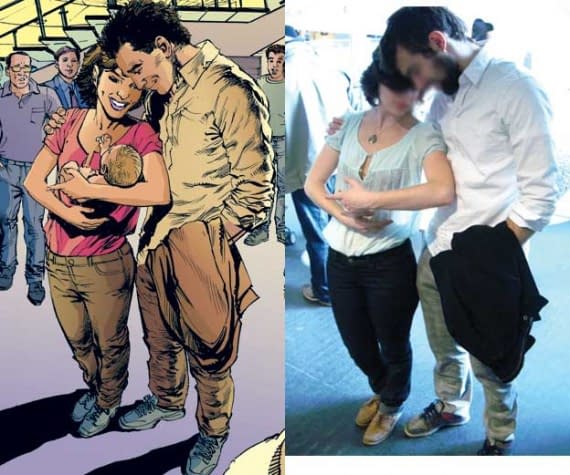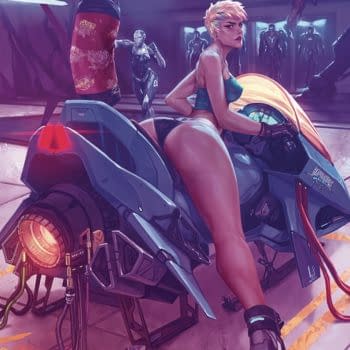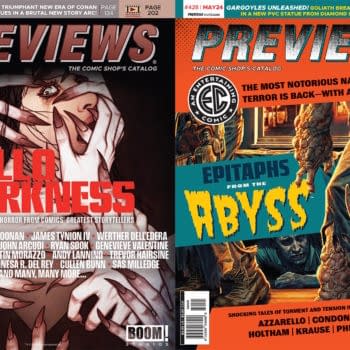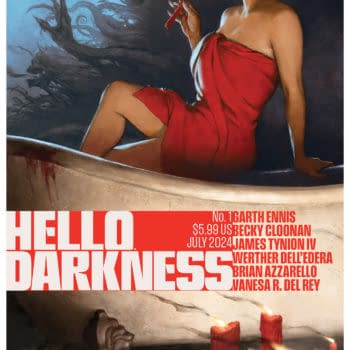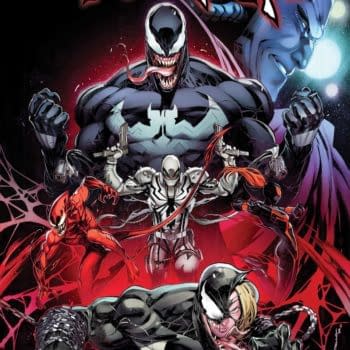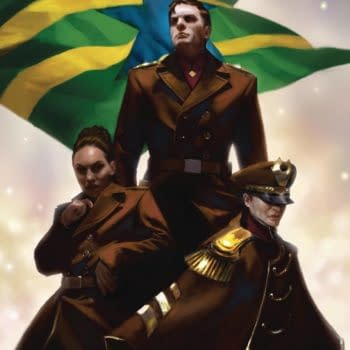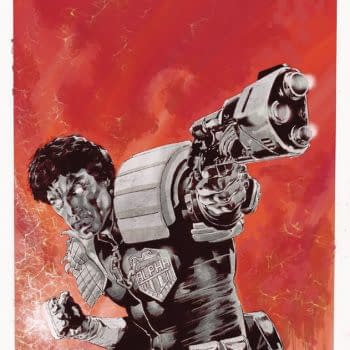Posted in: Recent Updates | Tagged:
What Would Josh Do? by Josh Adams #3 – Blog@Josh-O-Rama
Comic book artist Josh Adams talks about the world he finds himself in – the industry, the family, the personality traits…
I'd like to thank everyone for the lively conversation this past week. I want to let all of you know this is a blast writing these columns for you guys and it provides a good change of pace for me.
And I'd like for this week's column to be about one of the questions posed last week regarding artists use of reference… so here goes…
I trace photographs.
Not only do I trace photographs but when someone comes to get a portfolio review from me my first piece of advice is to trace photos. I know some of you are thinking, "well, that's cheating." It's not. If it is, show me the rule book on comics.
I'll explain my process to you. You see when I get a script, for example, House of Mystery issue thirteen of which I penciled a number of pages with my father, the first thing I do is I sit down with the script and read it through, all the while keeping a sheet of paper with me. On that sheet of paper I have pre-ruled four small (about 25 to 30 percent of the board size) layout frames. While I read the script I am sketching forms, shapes, abstract lines on my layout, to get a general feel for a variety of layouts on my pages. This really has nothing to do with the story but I like my layouts to be organic in nature so allowing my hand to scribble while my brain is focused on the script is a good way to ensure a level of random movement.
From there I look over these scribblings and if anything jumps out at me it becomes part of the layout. This isn't always the case but it gets my brain activated and rolling rather than having to stare at a blank layout waiting to solve these problems. In my opinion, and this is gained from being taught by people like Klaus Janson, Joey Cavalieri and Phil Jimenez, that a good page is a balance between the whole image and each individual image; generally meaning that every page I do, I like to have a main focal point. In the case of House of Mystery 13, I will refer to the last page of the story I worked on, in which the focal point is the two protagonists in awe of their newborn baby (from some alien egg!) I proceed with my layout, making it as tight as I reasonably can and figured out all my problems (composition, lighting, etc before moving forward.
Upon completion of the layout, the photographs start. I get in touch with two people to play my protagonists, either buy hiring people to pose for me or calling friends. In this case I called two friends of mine to pose for me. We happened to be very lucky on this job as the scene took place at the New York Museum of Natural History. So I arrange to meet them at the museum and we spend the day taking photos for the story, in and around the museum. Because this is an on-site shoot, I can't really set up any lighting but a good artist recognizes that in a natural environment, and artificial lighting betrays realism, and when venturing into the imaginary, the more real you make the things that are supposed to be real the more amazing the imaginary becomes.
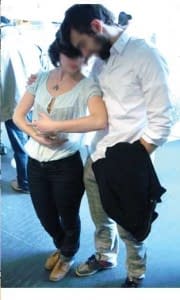
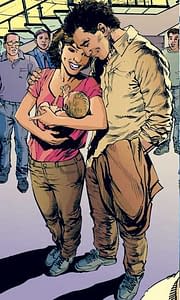
A good artist, I would say in my opinion, is an artist who can take a photo and only draw from that photo what would make their piece better and then use their expertise and sensibility to turn that knowledge and information garnered from a photo into a piece of art.
Allow me to tell you about one of the greatest American Illustrator's to ever use photo reference (and well just greatest American Illustrator in general.) His name was Norman Rockwell and early on his career he hired models to pose for him so he could do his pieces. Unfortunately, because of this he found his pieces became very static and thus somewhat boring, regardless of the quality. It then occured to him to take photographs of his models posing which helped him a great deal because A.) he didn't have to let his models rest, he just took the pictures and sent them home, and B.) because they didn't need to rest he could make them pose in a wider variety of poses that couldn't be held for long periods of time. It was great, his work was better but he was still hitting some snags. If he could paint faster, and had some way of ensuring the figures were in proportion to each other and properly posed like his photos. What was he to do? Well he took his photos and he projected them right on to his canvas, yup, so he could trace them. Now of course what he was doing wasn't "cheating" but rather using the reference to supplement his impressive artistic ability.
Now compare the photo to the art below:
This in my opinion is an accurate representation of what I consider proper "tracing" of reference material. I have come across many other attempts at tracing reference material of which I believe is not to be considered appropriate. The use of another person's artistic efforts, be it illustration or photograph is a poor way to represent yourself, however, I do not believe (barring legal action) it is wrong to do in comics. I know that may be a controversial stand point but there aren't really rules to drawing. Copyright law, fan and publishers are to decide in their own ways how to deal with such actions. It's not really my problem.
On a side note to what I believe is a poor way to represent oneself as an artist is to not use reference to it's fullest. These photos can provide information that your brain simply does not pick up on and to improperly use them causes your storytelling to be lacking and often times creates a very static image. Advice: if you decide to trace, keep a second copy next to you. Your brain and that second photo is where the information comes from, the photo under your board is simply a placeholder.
Alright, I was thinking about it and I have decided that I have an assignment for you. I am going to pick some super characters and you are going to cast them for me. You can contribute by forum or by email which can be found on my site, though I prefer forum, and I will pick from the list my favorite choice and will draw them as a superhero for next weeks column. I used to do this with friends and it was pretty fun and since we are a group of comic readers I thought I would start with a tough one: The Young Avengers, cast any or as many as you like and I will give you what I got!
Remember any questions you got, ask away and I will answer next week.
Josh Adams work can be found at whatwouldjoshdo.com. He will answer questions sent to josh@whatwouldjoshdo.com in subsequent columns. Lawyers willing. His opinions are, naturally, his own.


